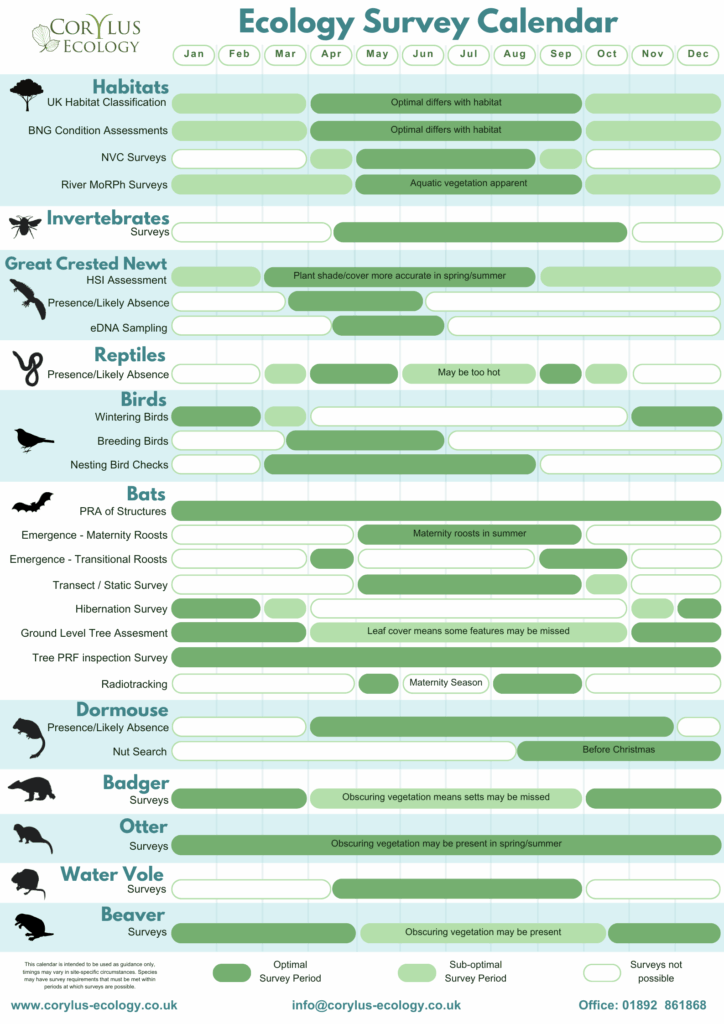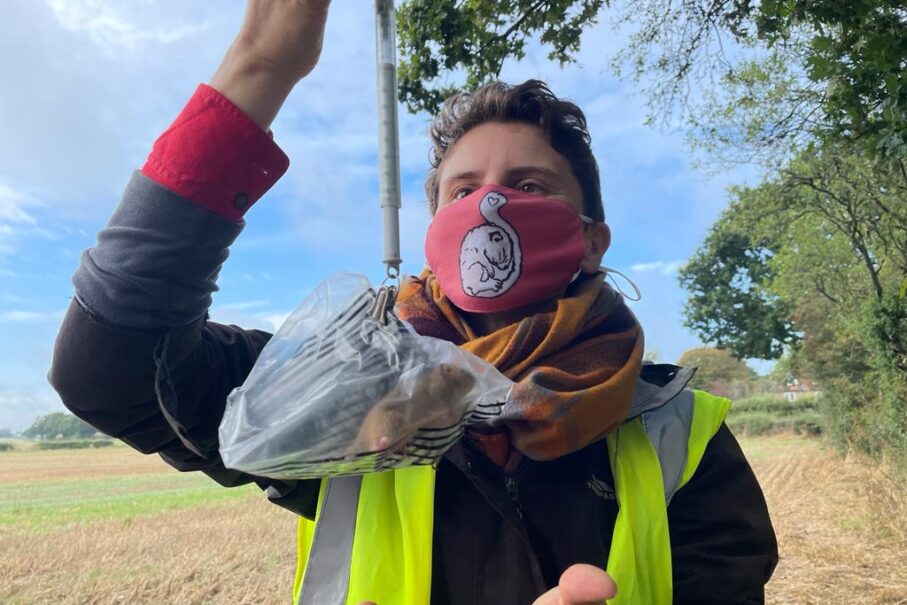
The UK is home to a number of legally protected species. Local planning authorities have a duty to consider the impact of a development on such species as part of the determination process.
Planning applications typically need to include an assessment of potential impacts on these species, as they are a material consideration within the planning system. This may require detailed surveys to establish whether they are present within a site and provide an idea of population and distribution.
Corylus Ecology has a team of licensed surveyors, with extensive experience in designing and delivering protected species surveys and mitigation, compensation and enhancements for different types of projects. Our team is also experienced in applying for protected species mitigation licences post-planning.
If you would like further information on protected species surveys and licensing, please get in touch.
Working with Corylus Ecology
Working with Corylus Ecology
Protected species surveys are undertaken following the most up-to-date methodologies outlined in nationally recognised standards, including in relation to timings. Protected species surveys are usually seasonally constrained, as illustrated in our survey calendar.
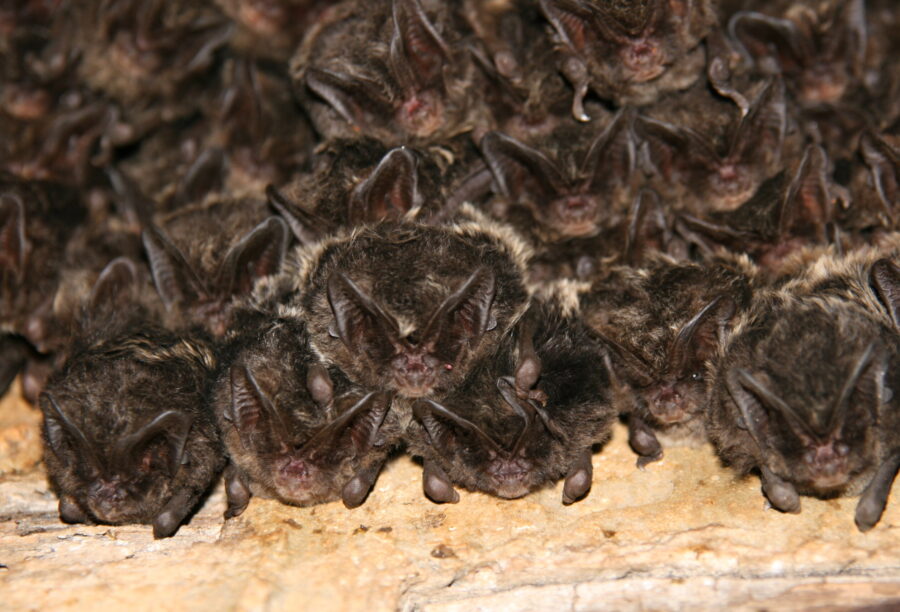
Bats
Corylus Ecology has a highly knowledgeable bat survey team with decades of experience in delivering all types of bat surveys, mitigation and licensing for a multitude of different projects.
We have worked on projects requiring complex bat mitigation design and implementation, bat trapping and radiotracking surveys, large-scale data analysis and long-term monitoring surveys. We have also acted as expert witnesses for bat related issues at Public Inquiry.
Our staff hold Natural England licences to survey bat roosts and some have advanced licences to undertake specialist survey techniques including the use of harp traps, mist nets and acoustic lures. Some of our staff are also qualified to attach identification rings and radio-tags to bats under conservation and research project licences.
Bat surveys
Corylus Ecology ecologists are licensed to undertake all types of bat surveys for any size of project. All bat surveys are undertaken following the most up-to-date methodologies outlined in nationally recognised guidance. The types of bat surveys we undertake are:
Preliminary Roost Assessments (PRA)
These are surveys of built structures to ascertain whether bats are present or have the potential to be present and whether further surveys, e.g. emergence surveys, are required to inform the project impacts.
Ground Level Tree Assessment (GLTA)
Assessing the potential for trees to support roosting bats and whether further surveys, e.g. Potential Roost Feature (PRF) inspection surveys and / or emergence surveys, are needed.
Potential Roost Feature (PRF) Inspection Surveys
Comprising aerial climbing surveys to access and inspect potential bat roosting features in trees.
Emergence Surveys
Surveying built structures or trees from dusk using infrared and thermal imaging camera and ultrasonic sound detecting equipment.
Bat Activity Surveys
Comprising walked nighttime transect surveys coupled with automated static bat detector surveys.
Swarming and Winter Hibernation Surveys
Assessing built structures such as tunnels and underground sites to ascertain whether they are being used by bats for swarming behaviour and/or hibernation.
Advanced Licence Bat Survey Techniques (ALBST)
Including bat trapping and radiotracking surveys to determine species assemblages, home range, flight lines, and colony size and distribution.
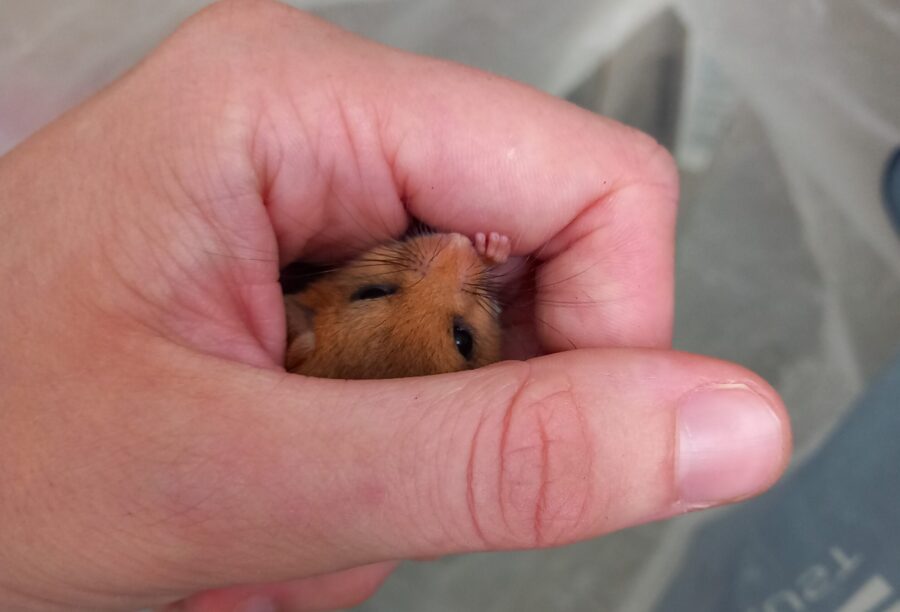
Hazel dormouse
Dormouse Muscardinus avellanarius (or hazel dormouse) is a mainly arboreal species found in a variety of habitats, including woodlands, hedgerows and scrub.
Dormouse surveys include an initial assessment of habitat suitability and advice on whether follow-up surveys are required. Where dormouse surveys are required, these are typically carried out over an extended survey period through spring, summer and autumn.
Dormouse surveys
Dormice are protected under Schedule 5 of the Wildlife and Countryside Act 1981 (as amended) and the Conservation of Habitats and Species Regulations 2017 (as amended). Under the legislation it is a criminal offence to deliberately kill, injure, disturb or capture a dormouse, and their breeding sites and resting places are protected against damage, destruction or obstruction.
Hazel dormice are also listed as a Species of Principal Importance in England under Section 41 of the Natural Environment and Rural Communities (NERC) Act 2006.
Surveys for dormice can include a search for evidence, particularly nibbled hazel nuts, and also nest tube or nest box surveys in suitable habitats. Surveys are carried out in accordance with the Dormouse Conservation Handbook.
Additionally, our team can also carry out the newly approved method of detecting dormouse presence through the use of footprint tunnels. An ink of activated charcoal and olive oil is used to paint masking tape at either end of the tunnel, with a strip of white card placed in between. If a dormouse passes through the tunnel, its footprints are left on the card. Their presence can then be identified by their distinctive footprints. This method is non-invasive and doesn’t require a licenced surveyor as disturbing a dormouse is unlikely. This method can provide a higher detection rate than nest tubes and boxes and may provide an indication of distribution across a site at a faster rate. As per guidance the tubes are checked fortnightly and the survey period is a minimum of 3 months.
For sites with dormice, depending on the nature of the proposals, a European protected species mitigation licence may be required from Natural England in order to be able to go ahead with the proposed works. The licence application will need to be based on survey data outlined in the Dormouse Conservation Handbook and include details of mitigation and compensation measures.
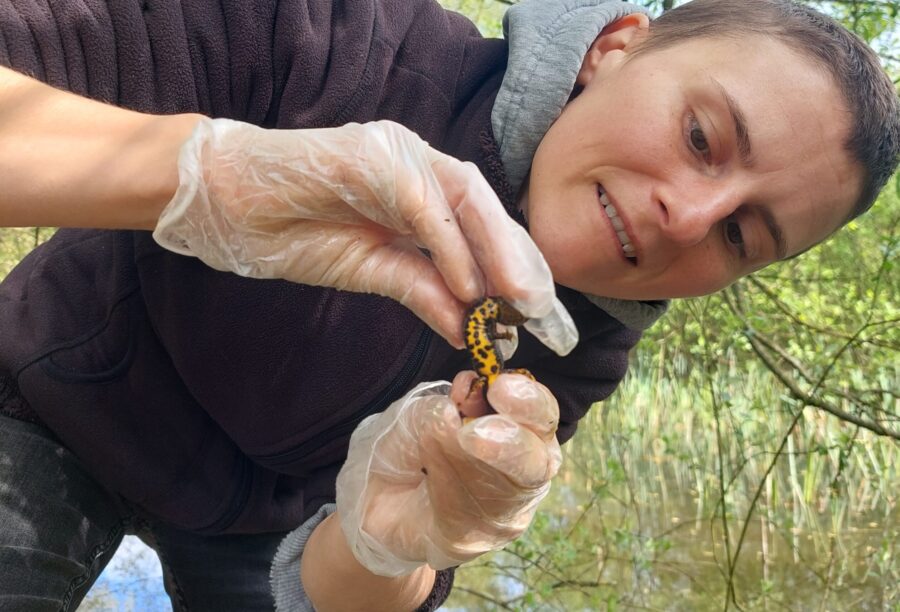
Great crested newt
Great crested newt Triturus cristatus (GCN) is the largest newt species in the UK. GCN can be found in ponds during the spring breeding season but spend most of the year in terrestrial habitats such as woodland, hedges and tussocky grassland as well as man-made habitats such as spoil piles.
As a first step, our team will scope the suitability of any pond on your site for GCN. Depending on the nature of your project, further surveys to determine the presence of GCN in on-site ponds may be required. As GCN migrate between several ponds during the breeding season, these surveys may extend to ponds in the local landscape.
Great crested newt surveys
Great crested newt (GCN) is protected under the Wildlife and Countryside Act 1981 (as amended), is a Priority Species under the UK Biodiversity Framework 2024 and is protected under Conservation of Habitats and Species Regulations 2017 (as amended). Under this legislation, GCN and their eggs are protected from intentional or reckless capture, killing, injury or disturbance. The habitat, both aquatic and terrestrial, that this species uses is also protected from damage, destruction or obstruction.
Smooth newt Lissotriton vulgaris and palmate newt Lissotriton helveticus can also be recorded along with GCN but are only protected under the Wildlife and Countryside Act 1981 (as amended).
All UK newt species hibernate throughout the winter in habitat features such as log piles, tree roots or mammal burrows.
What kind of GCN survey may you need?
GCN surveys
Corylus Ecology have licensed ecologists who can undertake any method of GCN surveys necessary. All surveys are undertaken following the most up-to-date methodologies outlined in nationally recognised guidance standards. The types of GCN surveys we undertake are:
eDNA Surveys
Environmental DNA (eDNA) surveys are coupled with Habitat Suitability Index (HSI) surveys and involve sampling a water body to determine whether great crested newt DNA is present via a third-party laboratory. This method determines presence or likely absence but cannot determine population size; therefore, if GCN are confirmed as present further surveys may be required.
Egg searches
Egg search surveys require checking submerged vegetation for folded leaves which house newt eggs. After the first GCN egg is found, GCN can be confirmed present but population size cannot be determined; therefore, further surveys may be required.
Torch survey
Equipped with a bright torch, our surveyors slowly walk around the pond perimeter at night and count newts detected if the water is clear enough to see through.
Bottle trapping
Our team make traps by re-purposing plastic drink bottles which are placed at the water surface around the pond perimeter. This is done with great care for the emergent vegetation and animal welfare. The traps are left in the water overnight and the newts are counted and released the following morning.
Netting
Where torch or egg search surveys are not possible, capturing GCN with a long-handled net, taking great care not to injure caught animals, may determine presence or likely absence but will not give a population size.
Refuge searches
Depending on the proposals, terrestrial searches can complement aquatic surveys by inspecting GCN refugia such as tree roots, spoil piles or mammal burrows.
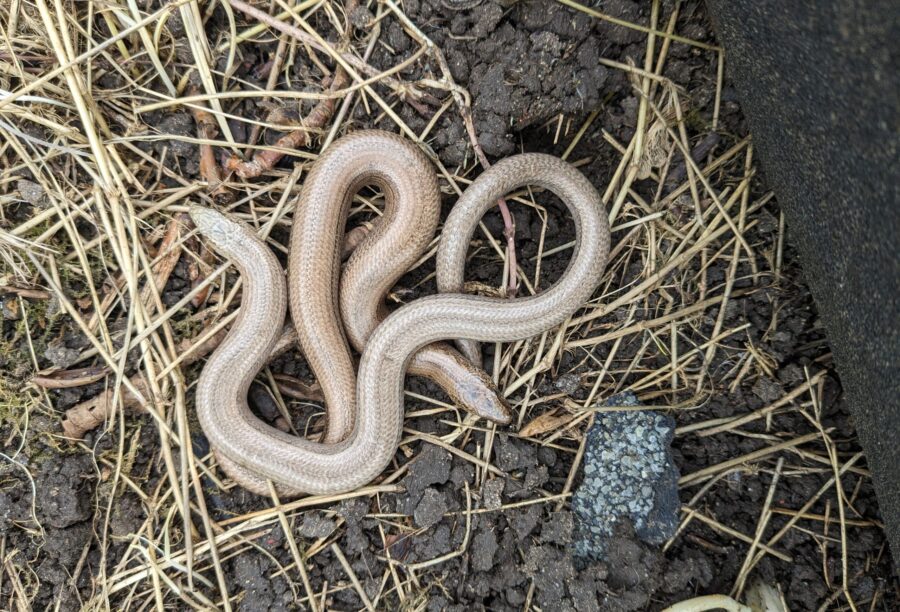
Reptiles
Reptiles, including grass snake Natrix helvetica and slow worm Anguis fragilis, can inhabit a range of different habitats including grassland, shrubby vegetation, hedgerow bases, and log or brash piles.
Artificial refuges are used to survey for reptiles during a recommended minimum of seven survey visits. These are spread over a minimum of 30 days between March and October, with the optimal survey months being April, May and September.
Reptile surveys
Reptiles are often found sheltering under or on top of objects that absorb heat and provide shelter from predation and disturbance. Artificial ‘refuges’ are therefore used to survey for reptiles in the form of ‘heat traps’ which comprise corrugated steel sheets or sections of heavy-duty bituminous roofing felt placed in areas of suitable habitat.
Adder Vipera berus, grass snake Natrix helvetica, common lizard Zootoca vivipara and slow worm Anguis fragilis are protected under the Wildlife and Countryside Act 1981 (as amended). It is an offence to kill or injure these species under this legislation.
Smooth snake Coronella austriaca and sand lizard Lacerta agilis are further protected against intentional or reckless disturbance and obstruction of their places of shelter and protection under the Wildlife and Countryside Act 1981 (as amended). The Conservation of Habitats and Species Regulations 2017 (as amended) affords further projection to these two species. It is an offence to deliberately kill, injure, disturb or capture them, take or destroy their eggs or to damage or destroy their breeding sites and resting places under this legislation.
Once surveys have been undertaken, a population estimate can be made and suitable mitigation measures such as reptile fencing, habitat manipulation or reptile translocations can be developed to meet the project’s requirements.
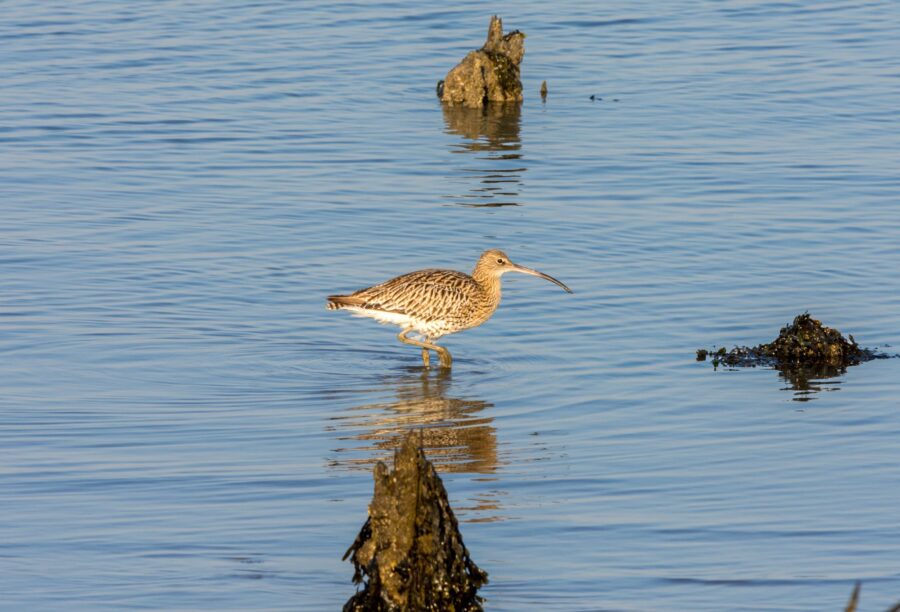
Birds
Corylus Ecology has the expertise to implement surveys for birds on a range of habitats including, but not limited to, coastal, wetland, woodland, arable and grassland, as well as designated sites to identify birds that could be impacted by your project.
The breeding season for birds is generally considered to be March to August inclusive, whilst the optimal time for winter bird surveys is October to February.
We will provide a comprehensive analysis of the data and full impact assessment, including advice on mitigation and detailed habitat management for birds, whilst maintaining compliance with legislation.
Bird surveys
We employ a variety of techniques, summarised below, to identify and evaluate the most pertinent information needed to inform your project’s requirements with respect to bird conservation. In all cases we are seeking to ensure your proposals remain compliant with legal, regulatory and planning policies designed to conserve birds:
Habitat Suitability
We use a variety of field and desk-based techniques to ensure our advice is tailored and proportionate to resolving potential conflicts and identifying possible opportunities for positive outcomes.
Breeding Bird Survey
We undertake up to six dawn surveys to record and identify the species and numbers of birds that may be breeding within a site. This is important to ensure that mitigation and/or habitat enhancements can be designed into a proposed scheme.
Winter Bird Surveys
We undertake winter bird surveys between October and March to understand the value of a site and how it may be used by migratory species that overwinter in the UK.
Species-Specific Surveys
For some sites it may not be necessary to carry out full breeding or winter bird surveys. Our ecologists instead, where appropriate, will carry out surveys recording Schedule 1 (Wildlife and Countryside Act 1981, as amended) listed birds such as barn owl, kingfisher, black redstart and some raptors.
Wetland Bird Surveys (WeBS) or Low and High Tide Counts
Within proximity to the coast, we undertake surveys of bird species associated with wetland habitats. These surveys may be necessary where proposals have the potential to affect sites nationally or internationally designated for important bird assemblages.
Breeding Bird Checks and Ecological Clerk of Works/ Site Supervision Works
All breeding birds are protected by the Wildlife and Countryside Act 1981 (as amended), this provides protection for birds, their nests and eggs. When vegetation clearance is unavoidable during the breeding bird season (March to August inclusive) our ecologists will carry out pre-work nesting bird checks.
Thermal Imaging Surveys
We undertake nocturnal surveys to understand how birds use landscapes at night.
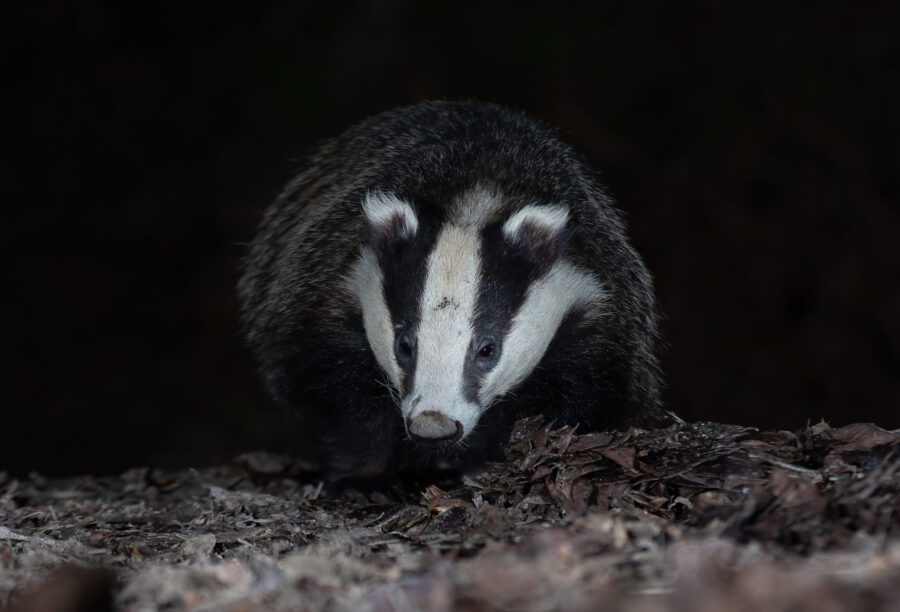
Badger
The European badger Meles meles is one of the UK’s largest omnivores, feeding mostly on worms but also other invertebrates, small mammals and fruit. Badgers are a social species, which live in groups called ‘clans’, in underground ‘setts’. Within a badger territory, clans will often live in main setts for generations, using other setts within the territory for a variety of functions throughout the year.
Corylus Ecology can identify the presence of badgers within a site, using a variety of survey techniques, and provide advice on badger mitigation, compensation and licensing.
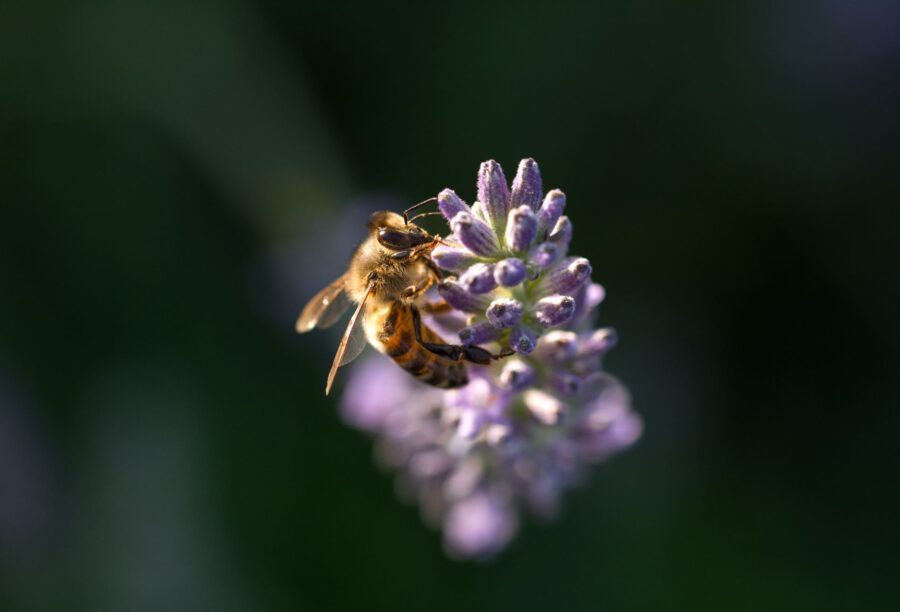
Invertebrates
We deliver terrestrial invertebrate surveys and enhancements for a wide variety of habitats encompassing woodlands, grasslands and heathlands, to inform mitigation design, habitat management, enhancement and long-term monitoring plans. Our work concentrates on: hymenoptera (ants, bees and wasps), diptera (craneflies and hoverflies), orthoptera (grasshoppers and crickets), coleoptera (beetles), heteroptera (bugs) and araneae (spiders).
Surveys include an initial assessment of habitat interest and suitability for invertebrates, as well as a data search to establish whether species of conservation interest are present within the local area.
Should surveys be required, these will be carried out during multiple visits over an extended survey period from April to September (with adjustments for local weather conditions).
Whether you want to understand the invertebrate assemblages of well-established habitats, or monitor the colonisation and development of invertebrate assemblages in newly created habitats, we provide you with insight into actions you can take to support invertebrates.
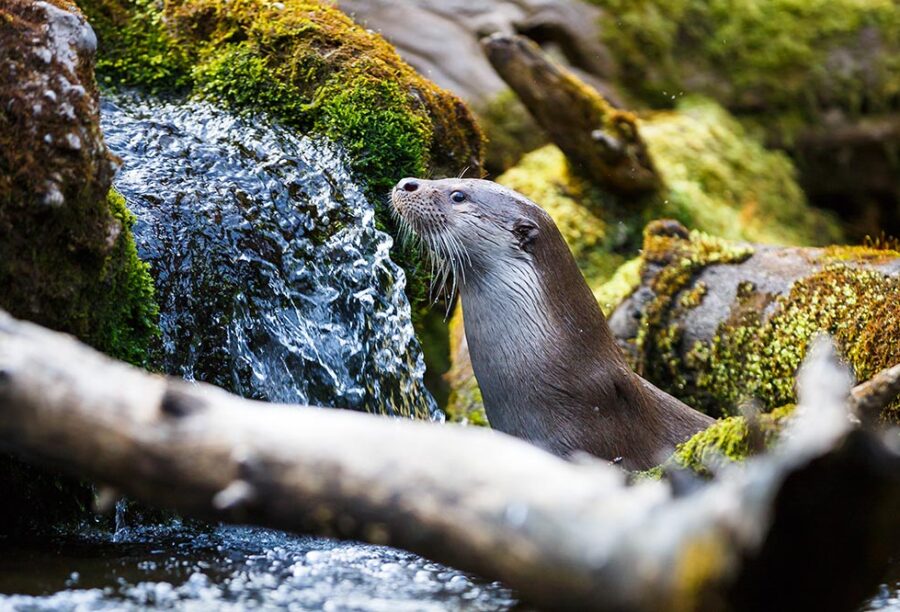
Otter
Otter Lutra lutra (or Eurasian otter) is a semi-aquatic mammal found in rivers, lakes and coastal habitats. They are present in many rural areas but are also often recorded in the centre of cities or towns. As well as large waterbodies, they may use small watercourses and ponds.
Otter surveys include an assessment of habitat suitability and, if suitable habitat is found, further surveys will likely be required. Otter surveys can be undertaken at any time of year and involve a particular focus on searching for signs of otters such as ‘spraint’ (droppings), footprints or feeding remains.
Otter surveys
Otters and their holts (holes in riverbanks) are protected under Schedule 5 of the Wildlife and Countryside Act 1981 (as amended) and the Conservation of Habitats and Species Regulations 2017 (as amended). Under the legislation it is a criminal offence to deliberately kill, injure, disturb or capture an otter, and their breeding sites and resting places are protected against damage, destruction or obstruction, even when unoccupied.
Otters are also listed as a Species of Principal Importance in England under Section 41 of the Natural Environment and Rural Communities (NERC) Act 2006.
Surveys for otters will be required when, for example, proposals will impact a water body, such as a river, stream or lake, or impact habitats near to a water body, whether directly or indirectly. Otter surveys may include habitat assessments and/or presence/likely absence surveys.
For sites with otters, depending on the nature of the proposals, a European protected species mitigation licence may be required from Natural England in order to be able to go ahead with the proposed works. The licence application will need to be based on up-to-date survey information and include details of mitigation and compensation measures.
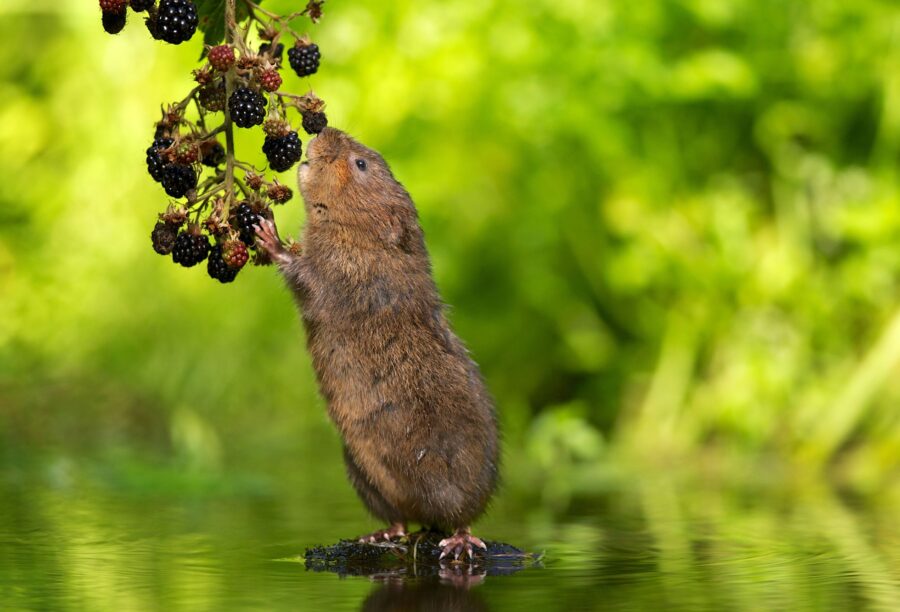
Water vole
Water voles Arvicola amphibius are found in many types of waterbodies including rivers, streams and ditches as well as ponds, lakes and within reed beds and marshes. They can be found in both rural and urban settings such as brownfield sites.
Surveys include an assessment of suitability for water vole and a systematic search for field signs of their presence, including the site and wider area.
Water vole surveys are season-dependant, so it is important to schedule surveys at the right time of year.
Water vole surveys
Water vole surveys include a search for evidence including burrows, footprints, latrines, grazed ‘lawns’ and feeding remains. At least two water vole surveys are required, and these are best carried out during spring and autumn when water voles are most active and bankside vegetation is less dense, and should avoid times of high-water levels and heavy rainfall which may wash away or obscure the field signs.
Water voles are protected under Schedule 5 of the Wildlife and Countryside Act 1981 (as amended). Under the legislation it is a criminal offence to deliberately kill, injure, disturb or capture a water vole, and their places of shelter are protected against damage, destruction or obstruction.
Water voles are also listed as a Species of Principal Importance in England under Section 41 of the Natural Environment and Rural Communities (NERC) Act 2006.
For sites with water voles, depending on the nature of the proposals, a protected species mitigation licence may be required from Natural England in order to be able to go ahead with the proposed works. The licence application will need to be based on up-to-date survey information and include details of mitigation and compensation measures.
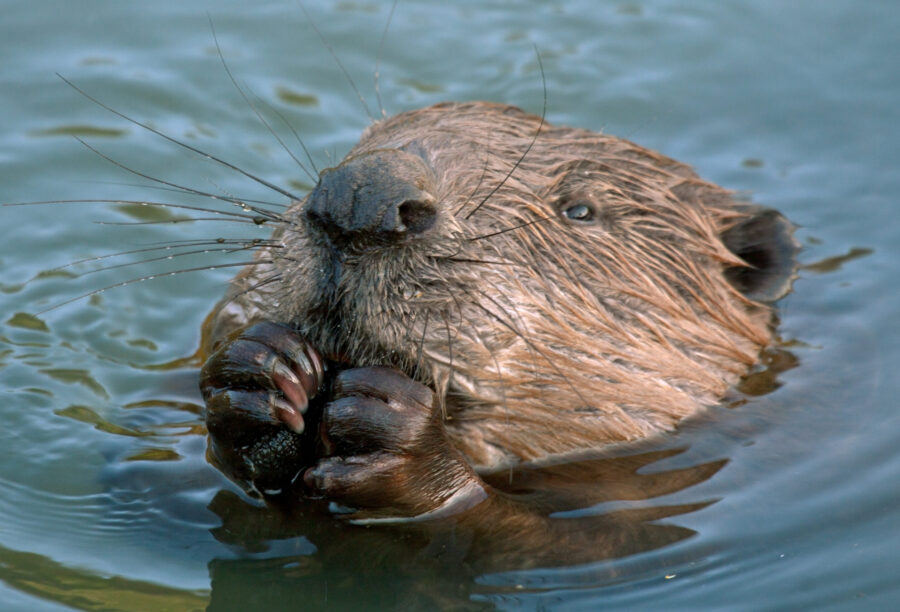
Beaver
The Eurasian beaver Castor fiber is a wetland species and the UK’s largest rodent. Our ecologists can assess a site’s suitability for beavers and carry out a systematic search for field signs of their presence.
Beaver surveys are best carried out during winter and spring when bankside vegetation is less dense, and should avoid times of high water levels and heavy rainfall which may wash away or obscure the field signs we search for.
Beaver surveys
This species has been the subject of several rewilding projects, as they can engineer wetland habitats, increase biodiversity, improve water quality and create more climate resilient landscapes.
Beavers are protected in the UK under the Conservation of Habitats and Species Regulations 2017 (as amended), as a European protected species in England, protecting their breeding and resting sites and protecting them from disturbance, deliberate harm and possession.
Surveys for this species include searching for field signs like feeding signs, lodges and burrows, dams, scent mounds, slides, food caches and footprints, covering all areas within 20m of freshwater and 50m of proposed works. The use of camera traps can also be helpful for identifying the number of animals as they are most active at dawn and dusk, and sometimes through the night.
If beavers are present our ecologists can provide appropriate advice and mitigation plans to protect beavers on your site and ensure compliance with UK law. Please note, some management works relating to beavers can only be carried out by a licensed person.
Certain management activities of beavers and the environments they create, that would otherwise constitute as an offence, require licence from Natural England. Our ecologists can provide up-to-date advice and mitigation for beavers if present on your site.

